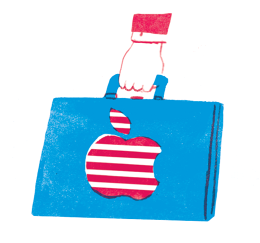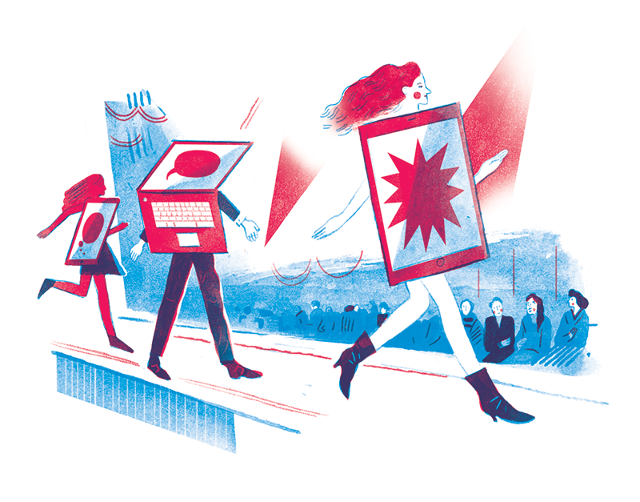“This wouldn’t have happened if Steve Jobs were around” is one of the most overused insults that even fans will hurl at Apple CEO Tim Cook when he does something they don’t like. Fact is, you can apply the line to many of the things that Cook has done to make Apple as powerful, profitable, and vibrant as it is.
1. Apple Controls Its Technology Destiny
Apple increasingly relies on its own prowess at designing many of the chips and sensors that power its devices. That gives the company even tighter control over designing a harmonious, symbiotic hardware and software experience, which matters not only for the future of the iPhone but for whatever comes next.
2. Apple Is A Services Company As Well As A Device Company
Apple generates 12% of its revenue from digital services such as iCloud, Apple Pay, AppleCare, and the App Store, and that part of the business is growing faster than hardware sales. “I expect it to be huge,” Cook says. “It’s already large. If you look at it on a stand-alone basis, and we’ve started disclosing this now, it’s tough to find many companies that are as big.”

3. Apple Means Business
Beyond corporate graphics departments, Apple never focused much on enterprise sales. Now it has a big deal with IBM to sell its devices to the corporate world. The iPad Pro is increasingly targeted at business users, reframing the iPad from a consumer device—in which interest is declining—to a next-generation business laptop.
4. Apple Is A Fashion Brand
The company’s products have long been exemplars of good industrial design, but now Cook has incorporated the idea of seasons and collections for products such as the Apple Watch (witness its collaboration with Hermès on bands). The refreshed Apple Stores, in the hands of Burberry veteran Angela Ahrendts, also reflect this influence: Accessories are presented less as tech doodads and more as fashion products.

5. Apple’s App Store Is A Marketing Platform
One billion people come to the App Store to find out what’s worth putting on their iPhones, and Apple is relying on more downloads (and the resulting revenue). Apple marketing chief Phil Schiller now runs the store and has made more changes in the past six months than ever before, introducing promotional placement and expanding subscriptions to make apps a better recurring business.
6. Apple Has Bought Into Public Beta
Apple now realizes that trying to be perfect out of the gate is overrated. iOS 10 is being vetted by public beta testers. The new file system that will debut next year is already in developers’ hands. Even Apple Watch reflects the company’s willingness to put out a product, see what users like and don’t like, and react accordingly.

7. Apple Is Chasing New Frontiers It May Not Be Able To Qwn
From cars to health care to original streaming content, Apple is making big-money bets on lucrative markets that are crowded, complex, and unlikely to be dominated by any single company. “Our strategy,” Cook says, “is to help you in every part of your life that we can.”

8. Apple Is A Global Financial Power
The company has $233 billion in cash on hand. It has spent approximately $117 billion on stock buybacks in the last two-plus years. While some see these financial manuevers as distractions, this is all part of Cook’s professionalization of the company. Such financial sophistication can complement Apple’s other strengths. As Cook says, “I want Apple to be here, you know, forever.”
9. Apple Embraces Public Advocacy
Steve Jobs had a mission: to popularize computers as “a bicycle for the mind,” and to make them as beautiful as any other object that people care about in their lives. Cook has made Apple a moral company, too—in his coming out and supporting transgender policies; by fighting the FBI over consumer privacy; and in his significant push to make Apple an environmental leader in a business that is inevitably resource-intensive. “My belief is that companies should have values, like people do,” Cook says.
Read more stories from inside Tim Cook’s Apple:
- Playing The Long Game Inside Tim Cook’s Apple
- 9 Ways Tim Cook Has Transformed Apple
- Apple Music’s Bozoma Saint John: It’s About Passion, Not Algorithms
- Tim Cook On Apple’s Values, Mistakes, And Seeing Around Corners
- Why Cory Doctorow Thinks Apple’s Disappearing Headphone Jack Should Scare You
- The iPhone 7 Is Coming: Here’s Everything We’ve Heard So Far
- What I Learned Working With Jony Ive’s Team On The Apple Watch
- Four Reasons Why Betting Against Apple Is A Fool’s Game
A version of this article appeared in the September issue of Fast Company magazine.
Fast Company , Read Full Story
(33)